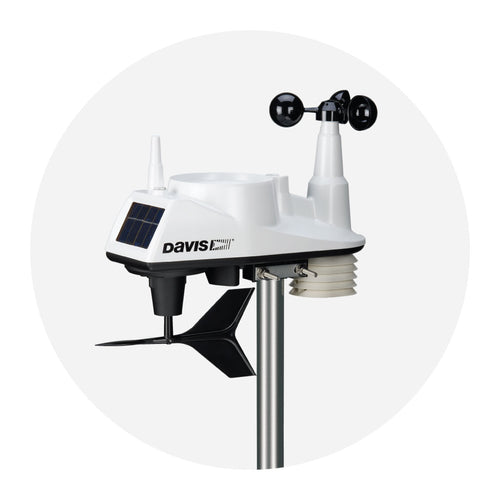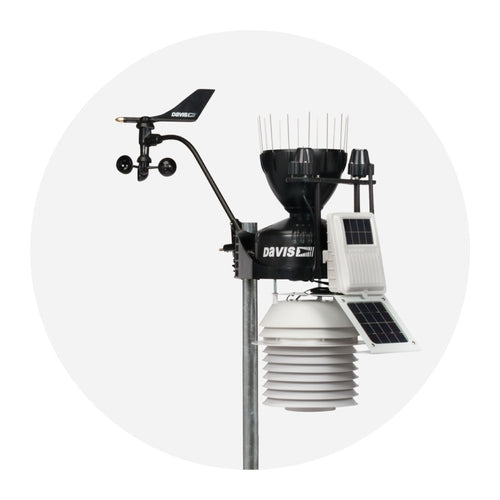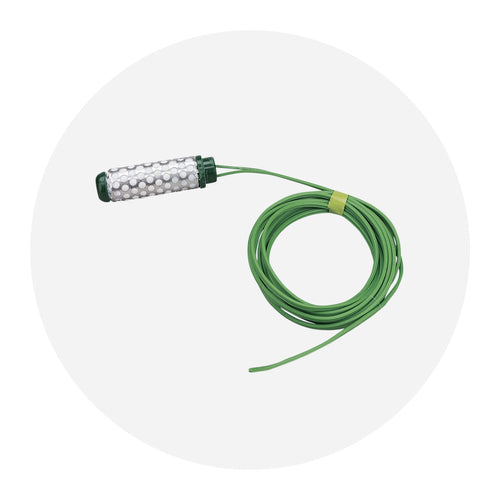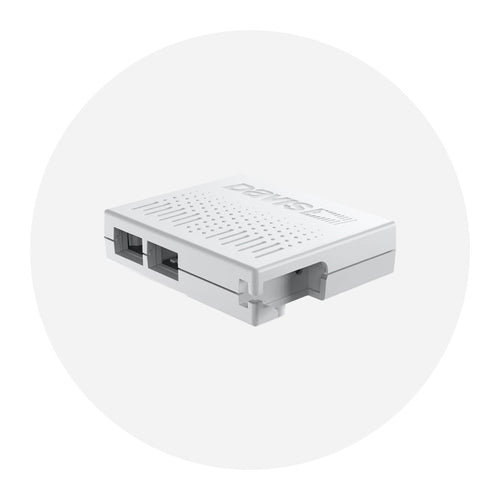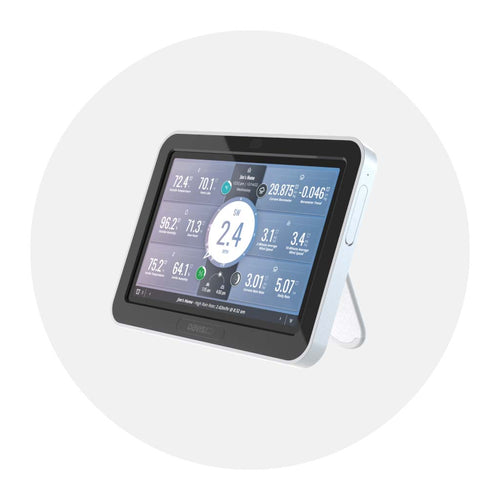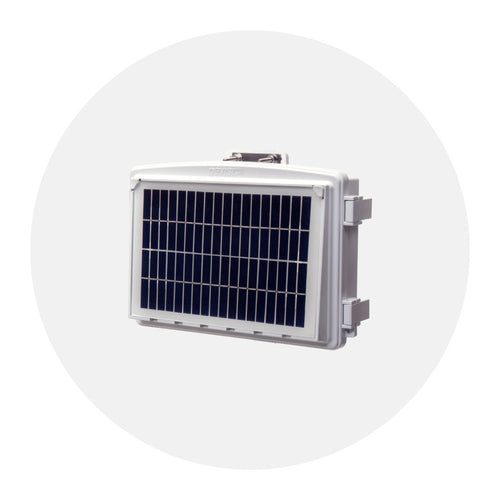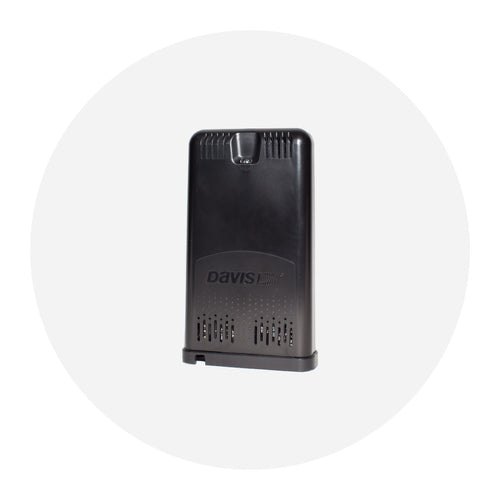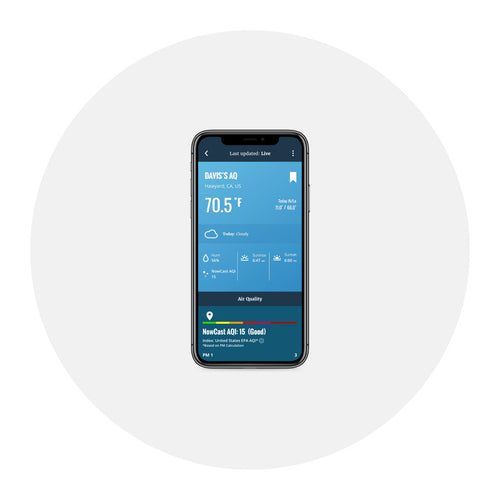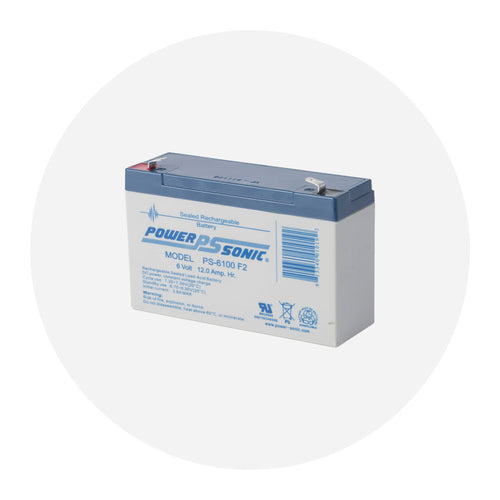Air Quality: Everything You Need to Know
An in-depth look at why you need to understand and monitor your air quality, and understand the Air Quality Index (AQI).
Download PDFWho Should Care About Air Quality?
Air quality is a topic of concern for anyone who breathes. With wildfires raging in the western United States sending smoke-laden air thousands of miles away from the flames, vehicles emitting fumes in cities and even rural highways, and indoor air pollution from gas and wood stoves, it is not surprising that more attention is being turned toward the dangers of breathing polluted air.
Anyone who is or has family members who are elderly
Anyone who has young children and babies in your home
Anyone who is pregnant
Anyone who has or has family members with asthma, cardiovascular disease, or respiratory disease
Anyone who lives in an urban environment
Anyone who plays or exercises outdoors
Anyone who has gas or wood fueled fireplaces or appliances
Anyone who has seasonal or dust allergies
Anyone whose work or hobbies include dust or fumes
Anyone who breathes
Air Quality Matters
Now you can know the real-time AQI of the air you, your family, your co-workers or employees, or your customers breathe.
Here, we will explain why you need to track your AQI.

Air quality, especially outdoors, is not usually under our control. We can do our part in minimizing it, but for the most part, we all have to breathe —23,000 times a day— the air we’re provided. Polluted air can look, taste, feel, and even often smell just like clean air. Along with nitrogen and oxygen, every breath you take contains a gaseous soup with tiny particles afloat in it. You breathe in nitrogen, oxygen, argon, water, carbon dioxide, helium, and hydrogen, along with the chemicals and particles like ozone, methane, pollen, dust, smoke, sulfur dioxide, VOCs, viruses, mold, nitrous oxide, ammonia … the list can go on and on.
All these dangerous natural or manmade substances make up air pollution. But air quality can be measured by the concentration of particulate matter (aerosols) in the air. Not only are tiny, inhalable particles the single greatest threat to health, but their concentration is also an indicator of the likely presence of other dangerous compounds like ozone.
Among the most common sources of air pollution is woodsmoke. Many places in the world are seeing more and more wildfires. While wildfires tend to occur in rural areas, the smoke rises into the atmosphere and travels to distant lungs. Using wood as fuel is a source of toxic indoor air pollution, a much bigger problem in developing countries where smoke from heating and cooking is not well captured. People often find the aroma of woodsmoke pleasant, but their lungs do not. Woodsmoke, as it turns out, is toxic. Several studies, including one using recent wildfires in California, has linked not just asthma to woodsmoke, but an almost 7% increase in cardiac arrests.
There is even some evidence that smoke from wildfires can be a contributor to COVID infections and deaths.
Knowing the AQI of the air outside or inside your home, school, or business gives you the power to take precautions when needed.
Read More
What is Air Quality?
Clearly, clean air is a luxury that is becoming rarer as industry, vehicles, fire, and increased population strain the natural air cleaning our planet offers. So much that governments around the world have recognized the threat to their citizens from breathing polluted air and have created methods to measure air quality to protect citizens and take steps to reduce air pollution.
To do this, many countries have created Air Quality Indexes. Each index is slightly different in its definitions, but they all offer a way to know if the air is safe to breathe, exercise or work in, or if precautions should be taken, especially for "sensitive" individuals.
In the Unites States, the Environmental Protection Agency (EPA) established National Ambient Air Standards for PM2.5 in 1997 (revised in 2006 and 2012). These safety standards are based on the short term (24-hour) average of 35 micrograms per cubic meter of air, and long term (annual) average of 12 micrograms per cubic meter of air.
The United States EPA Air Quality Index (AQI) assigns an index value from 0 to 500 based on the concentration of PM2.5 as well as ozone. Index values are categorized and color-coded to give users a way to quickly assess their air quality.

Particle pollution is measured over 24 hours. Usually, air quality changes slowly. But sometimes it changes rapidly such as when smoke from a wildfire begins to affect the air quality. A 24 hour average may not give you time to react in a timely way to rapidly changing air quality. NowCast uses longer averages during periods when air quality is stable and shorter averages when it is changing rapidly.
AirLink professional air quality monitor bases the AQI on PM2.5 and reports the AQI using the NowCast algorithm to give users accurate and real-time AQI of the air they breathe.
Read More
What is Air Quality?
The air you breathe is usually invisible. Even when smog is visible in the distance, the air close to you usually looks clear. But we know that air is a gas soup, and the bits of carrots and noodles floating around in there are a mixture of solid particles and aerosolized liquids. These are called particulate matter, or PM. Sometimes those bits are big enough to be seen: dust motes swirling in front of a sunny window, dirt thrown up by wheels on an unpaved road, layers of soot coating a chimney. But most of the particles are too small to be seen.
In PM, size does matter, with the smaller being generally progressively worse, up to a point. Particles we care about are small enough to be inhaled. PM is categorized by the diameter of the particle, measured in micrometers or microns. A micron is one millionth of a meter. (For reference, a human hair is about 70 microns in diameter, a grain of salt is about 100 microns.) All PM includes both man-made and natural sources.
PM10 includes all particles that are 10 microns or smaller, but larger than 2.5 microns. That is small enough to be inhaled, but many are large enough to be caught in your nasal filtration system, where they are caught by mucous and pushed by cilia back into your throat and swallowed. PM in this category include dust, mold, pollen.
PM2.5 is particles up to 2.5 microns in diameter but larger than 1 micron. Particles this small are small enough to not only fly right by your nasal filtration system, but be pulled deep into your lungs. They are small enough to even get into your bloodstream from your lungs.
PM1 are nano particles up to 1 micron. They are particles of dust, combustion by-products (particularly from diesel engines), bacteria, and viruses. Inhaled PM1 can pass right through cell membranes of your lungs’ tiny sacs called alveoli. While oxygen and carbon dioxide are being exchanged by the alveoli, inhaled fine PM can also be deposited into the bloodstream.
Polluted air contains more than PM, but the concentration of PM, particularly PM2.5 is a very good indicator of air pollution overall. AirLink bases its AQI on the concentration of PM2.5.

Laser technology had made the measurement of particulate matter in air accurate and affordable. First, surrounding air is drawn into a cavity in the sensor with a small fan. The size of the cavity is precise, so the volume of air is known. The stream of air goes by a laser beam. Particles in the air deflect or scatter the beam. When the light reaches the other side of the cavity, a sensor there compares the intensity of the light to the intensity of light that was emitted. This difference in light intensity makes it possible for the sensor to measure the number and size of the particles in that known volume of air.

If you have asthma or other cardiovascular or respiratory disease, air quality can be "dangerous" when the AQI is as low as 50. By the time the AQI climbs to 200, the air is dangerous for everyone. An AQI of 300 is a health emergency.
Those with respiratory issues are not the only ones who need to be particularly aware of AQI. People with diabetes, older adults, children, and pregnant women are all more likely to be affected by unhealthy levels of particle pollution.
A 2015 study on the effect of air pollution on type 2 diabetes in the European Review for Medical and Pharmacological Sciences concluded that, "Air pollution is a leading cause of insulin resistance and incidence of type 2 diabetes mellitus. The association between air pollution and diabetes is stronger for traffic associated pollutants, gaseous, nitrogen dioxide, tobacco smoke and particulate matter."
Older and younger people are both more limited in their ability to compensate for poor air. Air pollution can aggravate heart disease and stroke, COPD, and asthma. For children, whose lungs are still developing, long-term exposure to poor air quality can impact neurodevelopment and cognitive ability. In the short-term, exposure to poor air quality can trigger asthma attacks.
Expectant mothers are also particularly vulnerable to poor air quality. It can cause low birthweight, preterm delivery, and even increase the likelihood of stillbirth.
Clearly, if any member of your household is an infant or child, is a senior, is pregnant, or has any respiratory or cardiovascular issues, even prolonged "moderate" AQI should be of concern.
But even people who don’t have any of those conditions must be careful when the AQI rises, especially if they work or exercise outside.
This is why it is important to know both the risk factors of individuals in your home and to know the actual AQI inside and outside your home.

When we think of what affects air quality, we are quick to blame smoke, vehicle and industry emissions, dust, pollen, VOCs and so on. We might overlook an important contributor to poor (and good) air quality: the weather.
The two most important weather parameters for affecting air quality are temperature and windspeed, and both can have positive and negative impacts.
High temperatures worsen air quality. The stagnant air we see during a heatwave effectively closes the lid on us, leaving no way for polluted air to disperse. Sunlight encourages chemical reactions in polluted air that make things worse. Hot temps encourage fires and smoke. Add to that, people without air conditioning open their windows and let that poor air into their homes. It’s clear that climate change will make air pollution worse, if only because of higher temperatures. But low temperatures can also increase air pollution. In the winter, cold temperatures caused by an inversion are another way to put a lid on poor air quality near the ground. In cold weather, more fuel is burned inside homes and cars idle to defrost.
One way to disperse air pollution is turn on a nice big fan, like a brisk wind. But during California’s devastating 2021 fire season, that brisk wind poured smoke from wildfires in California and other western states into the air of communities to the east, leaving folks in Nevada, Idaho, Montana and even the East Coast with poor air quality.

"A nice rain," you might say, on a poor air quality day, "that's what we need!" Rain, along with clouds and fog, and even snow, does clean the air. But as the Cat in the Hat taught us, those pollutants go somewhere else. While some are destroyed, many end up in someone else’s air or water.
Weather is an integral part of air pollution and the suffering, damage, and death it causes. Studies show that weather adds to the number of excess deaths due to poor air quality. Climate models predict that as temperatures continue to rise and heat waves and stagnation happen more often, weather-related increases in both O3- and PM2.5-related mortalities will persist.
Read More
Meteorology 101: How weather affects outdoor air quality

We think of air pollution as being an outdoor phenomenon. But indoor air pollution is a growing and important source of health problems.
The air in your home, office, workshop or business can become polluted by the entry of polluted outdoor air. But even more often it is generated by the house itself and what goes on inside it. Many buildings are made to be energy efficient —a good thing— but that can mean they are also airtight and indoor pollutants and PM are trapped.
Indoor pollution can come from many sources, including:
- Household products like cleaners, air fresheners, glues
- Fuel burning appliances and heaters that run on natural gas, propane, kerosene, oil, or coal
- Smoke and VOCs from candles and fireplaces
- Cigarette and cigar smoke
- Off-gassing from furniture
- Carpets that trap indoor pollutants
- Building and paint materials
- Pesticides
- Mold caused by high humidity
- Cosmetics
- Pet dander
- PM from hobbies like wood working
- Laser and 3D printers
Many of these causes can be effectively controlled by choosing products carefully, increasing ventilation, washing sheets, removing carpets, using air filtration systems, and strictly enforcing no-smoking rules, but sometimes inside air pollution can’t be avoided.
When the inside AQI is high, one way to reduce it is to open the windows for ventilation: the enemy of mold and stagnant air. If the outside air quality is good, ventilation can help clear the air, especially for a one-time air polluting event, like burned food or paint applications.
But when outside air quality is poor, you’ll want to close windows from outside to prevent air from entering and turn on air conditioners and HEPA air filtration systems.
How do you know which steps to take? Open the windows or close them? Having two AirLink sensors, one inside and one outside, will let you compare the two AQIs and see how effective the steps you take to keep inside air clean are.
If anyone in your home has respiratory problems, is a child, is pregnant, elderly, or, let’s face it, breathes, it is important to know the actual air quality index both inside and outside your home. AirLink air quality monitors measure PM to give you the accurate AQI of the air you are breathing, not the air miles away.

When you know the outside air quality is unhealthy, the recommendation is take shelter inside and do your best to keep that air from coming inside. You close your windows, keep doors shut, run air filters. You resist using candles, fragrances, and gas appliances. Then what? How can you know those steps are enough, or are even working?
If there is a person who is classified as a "sensitive individual," knowing these steps are working becomes even more important.
That is why having two AirLinks is not only useful, but scientifically interesting as well. It will let you see and graph both AQIs to verify that that expensive air filter is working. You will also be able to see if spikes in inside AQI are due to some event outside, such as a neighbor burning trash, or something inside, such as Dad burning pancakes on the cooktop.
A resident of the San Francisco Bay Area was alarmed enough by the outside AQI during the wildfire season of 2020 that she sheltered in her home. Her AirLink mounted outside confirmed that windows and doors needed to be securely closed. But this was the middle of a heat wave, and like many Bay Area residents, she had no air conditioning. The house began to feel stuffy and overheated.
"I thought, I’ll put a new filter in my HVAC intake and turn on the fan," she told us. "But first, I decided to bring my AirLink inside to see my actual indoor AQI. After turning on the fan, I was shocked to see my inside AQI climb – and fast! I realized quickly that this was a not a good idea! After that, I got a second AirLink so I can easily see what works and what doesn’t in keeping my inside air quality good."


No one benefits by breathing polluted air. Air with unhealthy AQI poses a risk to our lungs, the lungs of our pets, even wild animals.
But for people with respiratory diseases like asthma, or for infants and children whose respiratory systems are still developing, unhealthy air is particularly dangerous. Air pollution makes existing breathing problems worse and possibly even deadly. Breathing polluted air can make you more likely to get respiratory illnesses and become more sensitive to allergens.
There is even evidence that asthma can be not just triggered by, but caused by exposure to air pollution. Researchers have not been able to understand exactly how this happens, but the evidence points to air pollution affecting DNA. It can suppress genes that regulate the immune system. The body misreads the danger of the air and sets up an inflammatory response that leads to asthma.
While evidence for air pollution actually causing asthma is still being gathered, the relationship between exposure to outdoor air pollution and exacerbation of childhood asthma has been well documented. It is also known that asthma morbidity in children is increased by air pollution.
Respiratory dangers in air pollution include ozone and airborne particles. Both can trigger asthma attacks. But particulate matter (PM) in air has been particularly indicted in the development and triggering of asthma in children.
PM is measured by AirLink air quality monitor in three different size categories: PM10 (coarse), PM2.5 (fine), and PM1 (ultrafine). In the past, it was believed that coarse PM10 was less harmful than PM2.5 or PM1. But in a study at Johns Hopkins University, children exposed to PM10 – PM2.5 were more likely to develop asthma. The study showed that even short-term exposure to coarse PM can be associated with cardiovascular and respiratory diseases in all ages.
If you or a family member has asthma, as do 23 million Americans including 6 million children, when the AQI near your home or business is over 100, you know it is critical to lock down in your home, and that means knowing the air quality inside your home.
Keeping your indoor air clean is a necessity if anyone in your family has a respiratory disease or allergies.
The first step to achieving that goal is knowing the real-time and hyper-local AQI of the air your family breathes. Investing in a professional quality air quality monitor, like AirLink from Davis Instruments, is crucial. Since AirLink can be mounted indoors or outdoors, having two will give you the ability to not only know when to take additional steps, but to know how well those steps are performing in keeping the indoor air in your home safe.
Of course you’ll always want to have asthma quick relief medications on hand as part of your asthma action plan.
Read More
The Links Between Air Pollution and Childhood Asthma
Long-Term Coarse Particulate Matter Exposure Is Associated with Asthma among Children in Medicaid
Impact of Air Pollution on Asthma Outcomes

Should you run or cycle outside when air quality is bad? If you are a teacher or coach, when should your students stay indoors?
Exercise, whether you are 80 or 8 is good for you. Breathing polluted air is bad for you. At what point do these two facts collide? How can we keep ourselves and our children safe from the dangers of exercising in polluted air?
Joggers, kids in PE, cyclists, professional football players at a game, college and high school athletes at a track meet, elderly power walkers, and middle schoolers at a soccer practice all have this in common: they are breathing faster, deeper, and more through their mouths than when those same people are sitting quietly.
When you exercise, your respiratory volume is increased as much as 20-fold during intense exercise. You pull in more air, and you pull it deeper into your lungs. That means you suck in a much greater amount of pollutants that may be present in the air. You also open your mouth to increase the volume of air and this allows the air to skip your nasal filtering system and allow those nasties in the air go directly to the lungs to be absorbed.
There is increasing concern about the effects of breathing increased particulate matter (PM). According to an article in the British Journal of Sports Medicine by A.Carlisle and N. Sharp, evidence connects the levels of lead in an athlete’s blood and the impairment of their ability to filter air in their nasal passages to exposure to air with higher levels of PM.
The same article noted that even days after strenuous exercise, long-distance runners showed impaired nasal mucocilliary clearance. “It could be speculated that such reduced mucociliary clearance may be another contributing factor to the susceptibility of endurance athletes to air pollution, as pollutants that are normally cleared from the respiratory system are instead absorbed.”
We all understand the overwhelming benefit of aerobic exercise, and active play and competitive sports for children, and adults as well. But teachers, coaches, parents, and outdoor exercisers have to keep very close attention to the Air Quality Index (AQI) to make sure that the net gain of exercise is not eroded by the negative health effects from air pollution.
1. The first step is to know the actual AQI. An AirLink air quality monitor installed at your school, playing field, or home will provide you and your faculty with real-time AQI where you or your athletes will be breathing.
2. The second is know when to limit activity based on this real-time AQI. The AQI affects individuals with certain cardiovascular and pulmonary issues, such as asthma, more severely, so it is crucial to identify those students and limit their activites at lower AQI than you would for typical, healthy individuals. (Click here to see this chart from California Spare the Air for reference.)
- When the AQI is 100 or more, remove sensitive athletes and monitor everyone. Provide indoor activies to sensitive individuals or anyone who needs it.
- When the AQI is over 150, outdoor activities should be shortened, exertion minimized, and prolonged or heavy exertion avoided. (Sensitive individuals should be moved to indoor activities.)
- When the AQI is over 200, consider rescheduling events or moving indoors.
- If the AQI reaches 300 or more, outdoor activities and events should be canceled or moved indoors.
3. If you are an outside exerciser, know your own health limits. Exercise is good for your health, air pollution is bad: when does the negative outweigh the positive? First, talk to your doctor about your cardiovascular or pulmonary health and have a plan in place so that exercise is safe. If you exercise outside, especially in an urban environment:
- Exercise earlier in the day, or in the evening.
- Avoid exercising near traffic or busy roadways.
- Avoid outdoor workouts on hot sunny days. Heat can react with pollutants near the ground to create more toxic compounds.
- Limit workouts on cold, hazy days when cold air traps pollutants lower in atmosphere.
- Do exercise right after a rain which can clean the air of PM.
- As the AQI rises, limit the duration of your outdoor workout. When it exceeds 100, consider moving your workout indoors if possible.
- Avoid exercise outside when the AQI is over 150, even if you are healthy.
- Use an air purifier when exercising inside.
Having an AirLink air quality monitor installed at your school or where students practice or compete in outdoor sports will let you make decisions based on the AQI about how long, or even IF, they should participate. AirLink will also provide you with real-time temperature and humidity to help decide if the temperature is too high or too low for safe outdoor exertion.
Read More
National Collegiate Athletic Association Guidelines

In many parts of the world, wildfire has become part of our expected summer “weather.” Wildfires burn thousands of acres, with areas like the western United States and Canada, and Australia gaining infamy for summer wildfires. But especially recently, countries like Spain, Portugal, Chile and Greece have had unusually severe fires. And if we have learned anything in the last decade, what happens anywhere on the planet Earth, does not stay in that place when it comes to fire.
The wildfire that devastated forests, trees, and buildings in Northern California created smoke that hazed the sky in Los Angeles. In July of 2020, people in Boston breathed air polluted by smoke from the Bootleg Fire in Oregon, thousands of miles away. Summertime and fire are becoming the new normal, and climate change means that “normal” is likely to persist or even worsen.
Wildfires MAKE weather. Heat and smoke, containing large amounts of carbon dioxide, black carbon, brown carbon, and ozone precursors, rise into the atmosphere where they affect sunlight, clouds, and local and global climates. While in the atmosphere, the toxins in wildfire smoke age and form other pollutants that can then be dropped into the lower atmosphere thousands of miles away.
Woodsmoke, to many people, smells good. But your lungs do not agree. The biggest health risk from woodsmoke is PM; but woodsmoke also contains benzene, formaldehyde, acrolein, and polycyclic aromatic hydrocarbons.
Woodsmoke can even affect your immune system and there is evidence it can increase your risk of severe COVID-19.
Wildfires that burn structures are even more toxic. Smoke from burning buildings can add even more toxins – over a hundred have been identified -- to the atmosphere, including toxic compound like carbon monoxide, hydrogen cyanide, hydrogen sulfide, sulfur dioxide, hydrogen chloride, ammonia, and VOCs.
While woodsmoke can cause some air quality monitors to overstate the AQI since AQI is based on the number of particles in the air. AirLink includes a Woodsmoke Adjustment that users can select. This adjusts the AQI to account for the fact that PM from wildfire smoke do not have equal mass as other PM.
Read More
Air Quality During Wildfires: How to Stay Safe
AirLink Air Quality Monitor by Davis Instruments - SKU 7210
Airlink is one of the best outdoor and home Air Quality Monitors on the market today. Monitor your air quality with our new innovative technology now!
Buy Now


